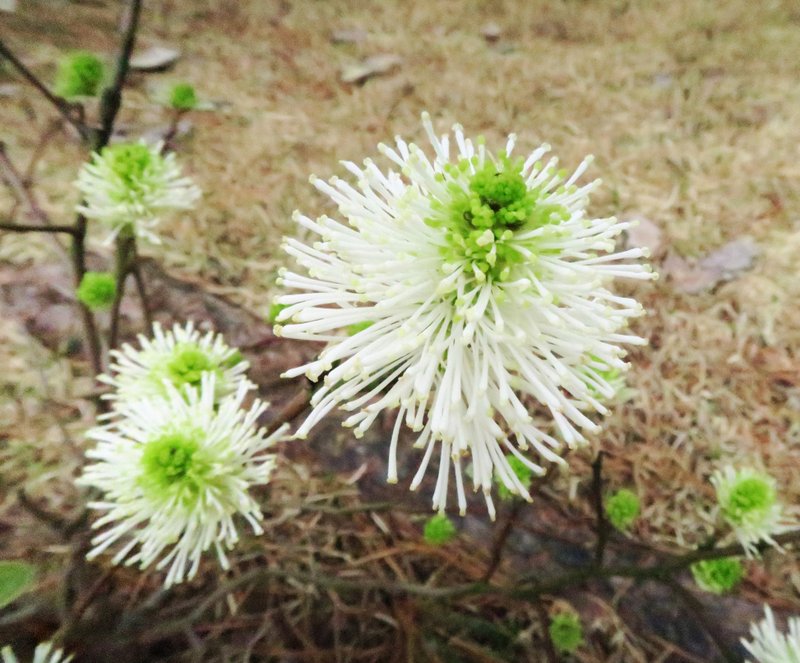FEBRUARY
At the end of January, the weather was more in keeping with what January weather should be: nights hovering in the 30s and daytime temperatures in the upper 40s to low 50s. The cold snap we saw Jan. 20-22 slowed down the quick advance on spring we were making, but it seemed to do little damage except to some open blooms.
February is a kick-start to the gardening season. There are a lot of pruning chores to do, plus weeding and planting.
• Planting of winter vegetables can begin. From seeds for English peas, sugar snap peas, greens and spinach, to transplants of cabbage, broccoli and cauliflower, and to onion sets or bulbs, we can start to plant.
• Those who planted a winter vegetable garden are probably harvesting broccoli, cabbage, kale and turnip greens. Pay attention to the weather and protect tender plants if needed. Other than worrying about the weather, cool-season gardens are fairly fret-free, with few insects and diseases active.
• All fruit trees need to be pruned this month or in early March. Fruit trees require pruning every year. Proper pruning will ensure larger fruits. It also will open up the trees to better air circulation, which can discourage diseases. Left unpruned, fruit trees typically end up with too many branches and too much fruit on each branch. That might sound like a good problem to have, but overloaded limbs tend to produce smaller, lesser quality fruit — if the limbs don't break. Your trees may also grow much too large, making harvesting more difficult. Try to get your pruning done before they are in full flower.
• We have seen some early blooms on daffodils, but their care needs haven't changed. For all spring-blooming bulbs, enjoy the blooms as long as they last and then allow the foliage to remain green and growing for 6-8 weeks. Apply a light application of fertilizer around the bulbs to help with flower set for next year.
• Winter weeds are doing great this season. From henbit and chickweed to dandelions, wild onions and garlic, we seem to have a great crop. If you desire a weed-free yard, you can use a post-emergent herbicide this month to kill them before they are in peak bloom and setting seeds for next year. If you don't mind a few weeds, try to keep the annual ones mowed low (henbit and chickweed) to prevent blooming and seed problems. If you have weeds in your flower beds or vegetable gardens, use a sharp hoe and get them out, then mulch to keep more from growing.
• In spite of the January cold snap, winter annuals are doing well. When we have a mild day, give them an application of fertilizer to keep them blooming. If you didn't plant any and you want some color, you can still plant pansies, snapdragons and violas. English primrose, wallflowers and ranunculus will soon be available for sale and they make a nice addition of quick color in the cool-season garden. Adding cool color now will give you months of color before summer plants need to go in.
• Late February is the ideal time to prune rose bushes, butterfly bush and summer-flowering panicle hydrangea and 'Annabelle' hydrangeas. Other summer bloomers, such as abelia, althea and summer spiraea can also be pruned. If your crape myrtles need pruning, do so by mid-March. Your knowing why and how to prune will be better for your plants in the long run. If you see damage on shrubs or ground cover from the November cold, assess that damage and begin to correct it. If you see damaged leaves on spring-blooming shrubs such as azaleas and Indian hawthorn, let them bloom before pruning or you will be cutting off spring flowers.

NATIVE PLANT OF THE MONTH: FOTHERGILLA
Fothergilla, also called witch-alder, is a member of the witch-hazel family and a wonderful native shrub for the landscape.
Found across the southeastern United States, fothergilla is a slow-growing, deciduous shrub with two seasons of interest. In early spring, before the leaves appear, there will be small, creamy white, bottlebrush blooms with a sweet, almost honey-like fragrance. During the growing season, the foliage has a bluish color, which is a nice contrast in the garden, but the shrub really shines in the fall. The foliage turns brilliant shades of red, orange or yellow leaves before they shed for the winter.
While fothergilla can grow in full sun provided with enough moisture, in the heat of an Arkansas summer, it might prefer a bit of afternoon shade.
It likes a well-drained but moist acidic soil.
Do not plant in heavy soil nor in deep shade or you won't have any blooms. Bright light is needed for best blooming and fall leaf color.
There are standard and dwarf varieties. 'Mount Airy' is probably the most common variety available, growing to a height of 4-6 feet. A comparable size, 'Blue Shadow' has the bluest foliage during the growing season. 'Suzanne' and 'Blue Mist' are more compact shrubs, growing only 2-3 feet tall.

Read Janet Carson's blog at arkansasonline.com/planitjanet.
HomeStyle on 02/01/2020
